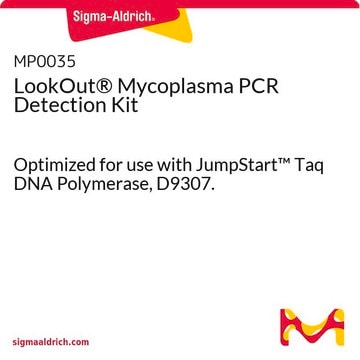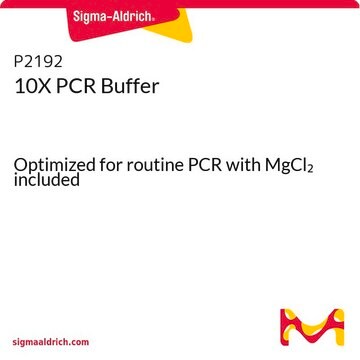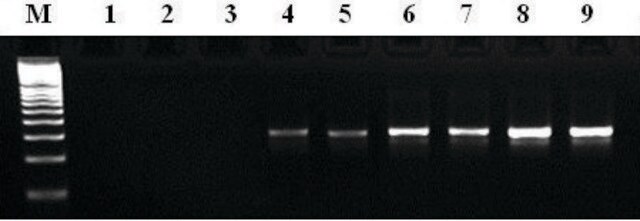D9307
JumpStart™ Taq DNA Polymerase
with MgCl2
Synonym(s):
hot start DNA polymerase, hot start PCR
Select a Size
Select a Size
About This Item
Recommended Products
Quality Level
form
liquid
usage
sufficient for 1500 reactions
sufficient for 250 reactions
sufficient for 50 reactions
feature
dNTPs included: no
hotstart
concentration
2.5 units/μL
technique(s)
PCR: suitable
color
colorless
input
purified DNA
suitability
suitable for PCR
application(s)
agriculture
Looking for similar products? Visit Product Comparison Guide
Related Categories
General description
Application
- For PCR amplifications that require reduced non-specific amplification
- For multiplex PCR
- For reduction of primer dimers
- in the amplification of DNA libraries of varying sizes
- in a methylation-specific, quantitative real-time polymerase chain reaction (MS-qPCR) to determine the BRCA1 promoter methylation status
- in the generation of plasmid by amplifying the full-length of HIF1β via PCR
Features and Benefits
- Reduces non-specific amplification
- Increases PCR specificity and yield
- Reduces set-up time concerns associated with manual or wax Hot Start methods
- Activation time of less than 1 minute
Packaging
Other Notes
Unit Definition
Legal Information
Antibody licensed for in vitro research use under U.S. Patent No. 5,338,671 and 5,587,287, and corresponding patents in other countries.
related product
Storage Class
10 - Combustible liquids
flash_point_f
Not applicable
flash_point_c
Not applicable
Choose from one of the most recent versions:
Certificates of Analysis (COA)
Don't see the Right Version?
If you require a particular version, you can look up a specific certificate by the Lot or Batch number.
Already Own This Product?
Find documentation for the products that you have recently purchased in the Document Library.
Customers Also Viewed
Articles
Explore PCR's history, from discovery to Nobel Prize. Discover real-time PCR (qPCR) and digital PCR developments.
Protocols
Whole Genome Amplification products, including kits for DNA extraction, support various DNA sources.
GenomePlex® Whole Genome Amplification efficiently extracts DNA from animal samples for genomic analysis.
Mycoplasma contamination of cell cultures is a serious issue impacting cell model validity. PCR testing for mycoplasma is an inexpensive, sensitive, and specific method for detecting contamination.
Protocol extracts genomic DNA from blood cards, useful for limited DNA samples in amplification.
Our team of scientists has experience in all areas of research including Life Science, Material Science, Chemical Synthesis, Chromatography, Analytical and many others.
Contact Technical Service















